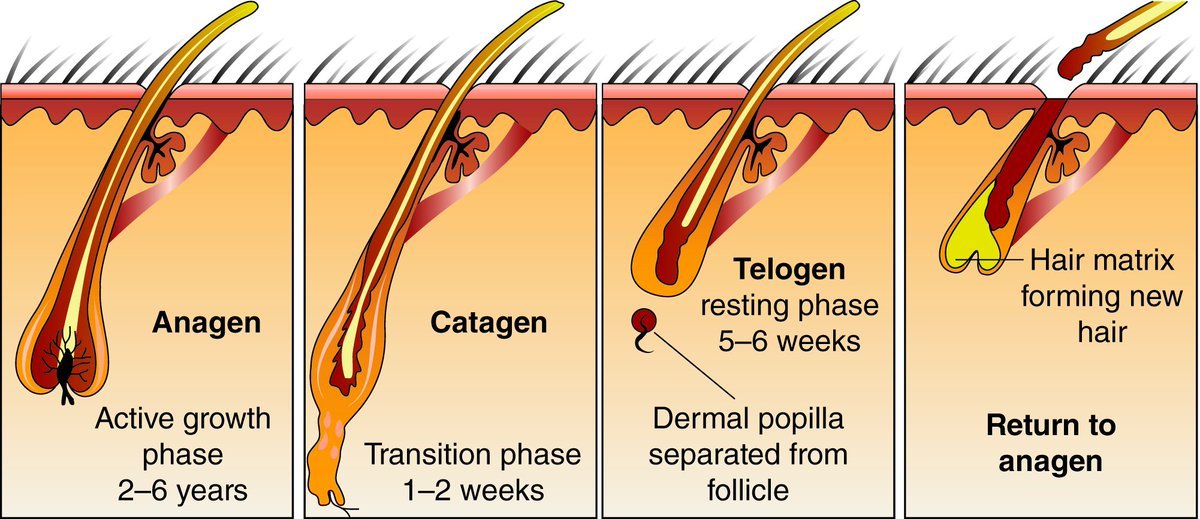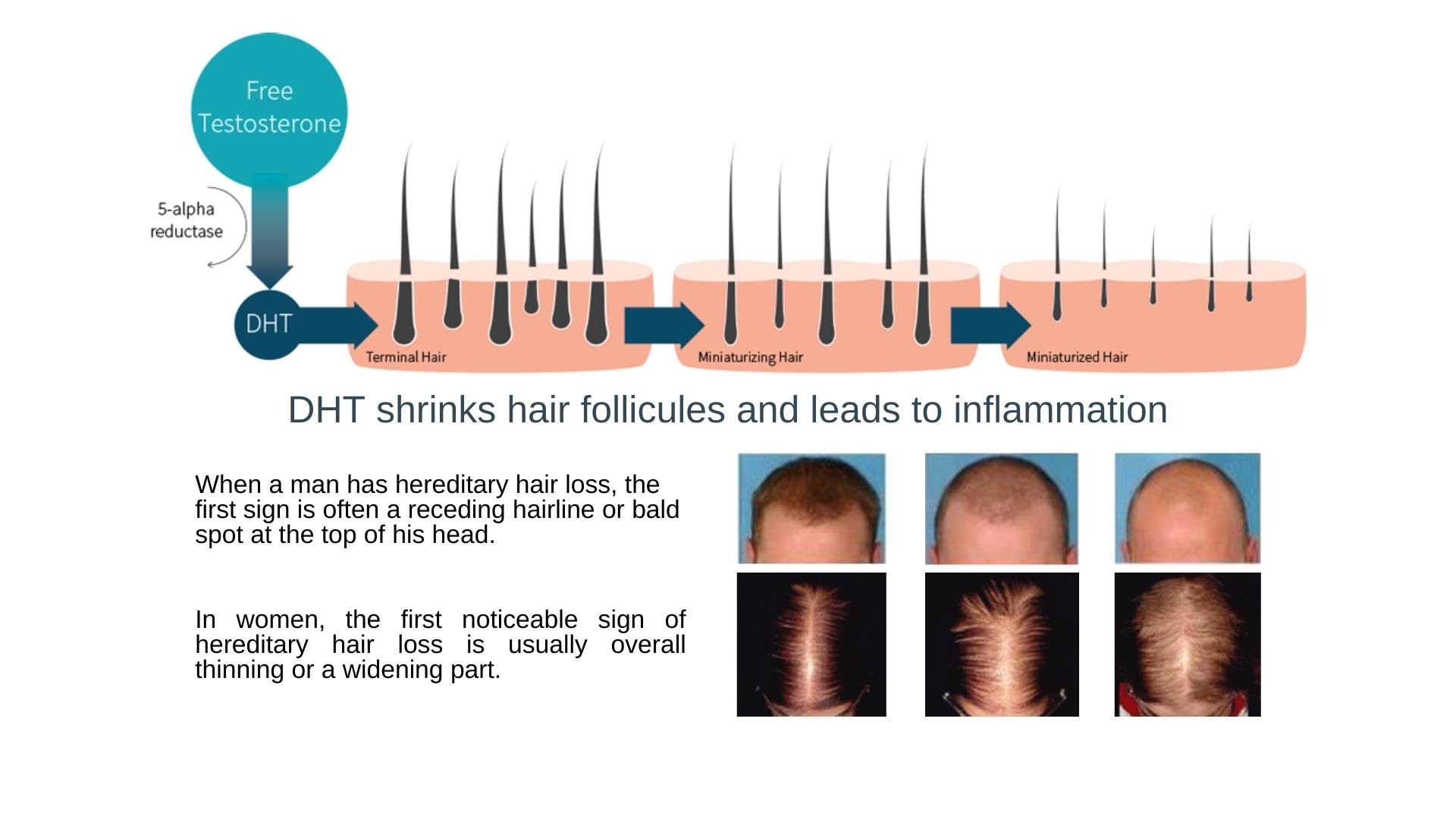Causes of hair loss
HAIR LOSS HAS MANY CAUSES
Knowing what causes your hair loss can help you determine what kind of hair loss you will experience. It determines if your hair will fall out gradually, abruptly, thin, regrow on its own, or if it requires treatment to regrow, and needs immediate care to prevent further or permanent hair loss.
While many people think of this as hair loss, it’s actually hair shedding. The medical name for this type of hair shedding is telogen effluvium. It happens when more hairs than normal enter the shedding (telogen) phase of the hair growth lifecycle at the same time.
Some people prefer to let their hair loss run its course untreated and unhidden. Others may cover it up with hairstyles, makeup, hats or scarves. While others choose treatments available to prevent further hair loss or restore growth.
Considering hair loss is typically related to one or more of factors, before pursuing any hair loss treatment, we recommend to talk with your doctor about the cause of your hair loss and exclude any underlying disease or condition.
HEREDITARY
The most common cause of hair loss worldwide is hereditary. This means you’ve inherited genes that cause your hair follicles (what each hair grows out of) to shrink and eventually stop growing hair. In men, it’s commonly called male pattern hair loss; while women get female pattern hair loss. Regardless of gender, its medical term is androgenic alopecia and caused by DHT (di-hydro-testosterone).
Is regrowth possible?
Yes, treatment can help stop or slow hair loss.
It may also help regrow hair.
The earlier treatment is started, the better it works.
Without treatment, you will continue to lose hair.
AGE
With age, most people notice some hair loss because hair growth slows down. At some point, hair follicles stop growing hair, which causes the hair to thin, and to also lose its colour. A woman’s hairline naturally starts to recede.
Is regrowth possible?
If caught early, treatment helps some people regrow their hair
CHILDBIRTH, ILLNESS and OTHER STRESSORS
A few months after giving birth, recovering from an illness, or having an operation, you may notice a lot more hairs in your brush or on your pillow. This can also happen after a stressful time in your life, such as a divorce, death of a loved one or living in the coronavirus pandemic. And who isn’t feeling more stressed and anxious during the pandemic?
A fever, illness and stress can force more hairs into the shedding phase. The noticeable hair shedding usually happens 2 to 3 months after having a fever or illness; and can last for 6 to 9 months before it stops.
Emotional stress is a beast. It can also force more hairs than normal into the shedding phase. I know seeing your hair thin and/or fall out in clumps can add to your stress, yet it’s important to try to de-stress. Only when the stress ends will the excessive hair shedding stop.
Why? Temporary hair loss is known and normal after fever and illnesses.
Is regrowth possible?
The good news is that when the cause of your hair shedding is due to a fever, illness, or stress, hair tends to return to normal on its own. You just have to give it time. As your hair grows back, you’ll notice short hairs that are all the same length by your hairline. Most people see their hair regain its normal fullness within 6 to 9 months.If the stress stops, your body will readjust and the excessive shedding will stop. When the shedding stops, most people see their hair regain its normal fullness within 6 to 9 months.
HAIR CARE + WEAR HABITS, HAIR STYLES, PULLING ON HAIR
If you color, perm, or relax your hair, you could be damaging your hair. Over time, this damage can lead to hair loss. If you often wear your hair tightly pulled back, or cover it the continual pulling can lead to permanent hair loss. The medical name for this condition is traction alopecia. Some people pull on their hair, often to relieve stress without even being aware of this bad habit, which is medically called trichotillomania.
Is regrowth possible?
Not always. You can change how you care for and wear your hair, which can prevent hair loss. Once you damage a hair follicle, hair cannot grow from that follicle. Having many damaged hair follicles creates eventually permanent bald spots.
HORMONAL IMBALANCE
One of a common cause of this imbalance is polycystic ovary syndrome (PCOS). It leads to cysts on a woman’s ovaries, along with other signs and symptoms, which can include hair loss besides excessive hair growth in certain areas. Stopping some types of birth control pills can also cause a temporary hormonal imbalance. Another cause can be a problem with your thyroid. Women who develop a hormonal imbalance can develop and notice thinning hair (or hair loss) on their scalp.
Is regrowth possible?
Treating the underlying disease can reverse the hair loss.
CANCER TREATMENT
If you receive chemotherapy or have radiation treatment to your head or neck, you may lose all (or most of) your hair within a few weeks of starting treatment.
Is regrowth possible?
Hair usually starts to regrow within months of finishing chemotherapy or radiation treatments to the head or neck. Once your cancer treatment is done, there are treatments and medication that help hair grow back more quickly.
Is it preventable?
Wearing a cooling cap before, during, and after each chemotherapy session may help prevent hair loss.
There are other reasons you could loose your hair. Underlying medical conditions - like autoimmune diseases, scalp infections, scalp psoriasis… etc. - require treatment. If you notice sudden or patchy hair loss or more than usual hair loss when combing or washing your hair, we recommend to see your doctor.
Prevention is key in many cases, and early treatment is crucial to avoid significant baldness.



